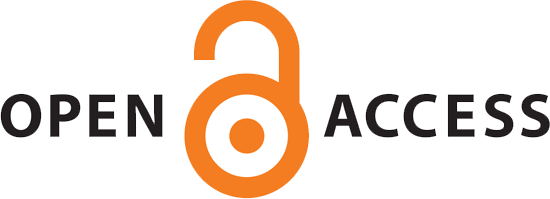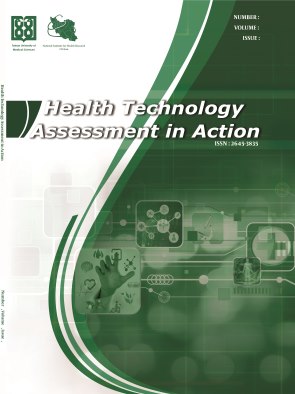Qualitative Analysis of National Documents on the Role and Duties of Supplementary Medical Insurance in Health System: Evidence from Iran
Abstract
Context: Supplementary medical insurance plays a key role in enhancing access to healthcare services and improving the overall quality of life for individuals. In healthcare system of Iran, these insurance companies face various legal and operational challenges that impact their effectiveness in providing adequate coverage and service delivery.
Objectives: The present study aimed to systematically investigate the roles, responsibilities, and legal framework governing supplementary medical insurance companies in Iran. The goal was to analyze how these companies operate within the health system and their interactions with service providers, as well as to identify the key policies and regulations that influence their operations.
Data Sources: A comprehensive review of all relevant documents related to supplementary insurance companies in Iran was conducted. These documents, published in Persian, included policies, laws, and guidelines governing the sector. No time limitations were applied, and the documents were sourced from governmental and regulatory bodies.
Study Selection: The study included 10 documents based on inclusion and exclusion criteria. These documents were selected for their relevance to the legal and regulatory framework of supplementary insurance in Iran, particularly those outlining the duties and responsibilities of insurance companies.
Data Extraction: Content analysis techniques were employed to extract and categorize the data from the selected documents. The analysis focused on identifying the main themes related to the operational duties of supplementary insurance companies in the Iranian health system.
Results: The study identified eight central themes regarding the legal requirements and responsibilities of supplementary insurance companies: (1) Interactions with service providers, (2) document handling processes, (3) electronic procedures, (4) contracts with healthcare providers, (5) service packages and coverage, (6) insurance premiums, (7) financial resources, and (8) monitoring and evaluation. The results revealed that the supplementary insurance landscape in Iran is highly fragmented, with a diverse range of policies and regulations. This diversity suggests a need for a more unified framework to streamline operations and ensure efficient service delivery.
Conclusions: The findings underscore the necessity of establishing a standardized, unified structure for supplementary insurance companies in Iran. Streamlining regulations and practices would not only reduce confusion but also enhance the effectiveness of supplementary insurance in improving healthcare access and quality. Further reforms in the regulatory framework are recommended to support the long-term sustainability and efficiency of supplementary insurance within healthcare system in Iran.
2. Hasanzadeh E, Gorji HA, Rezapour A, Yousef Vand M. [Challenges and Strategies for Developing Supplementary Health Insurance: A Systematic Review Study]. Hospital. 2023;22(2):28-38. Persian.
3. Vafaee Najar A, Hooshmand E. Designing a Supplementary Health Insurance Model for Iran. Hakim Res J. 2019;22(2):138-50. Persian.
4. Paolucci F, Schut F, Beck K, Greß S, Voorde C, Zmora I. Supplementary health insurance as a tool for risk-selection in mandatory basic health insurance markets. Health Eco Policy Law. 2007;2:173-92. https://doi.org/10.1017/S1744133107004124.
5. Dormont B. Supplementary Health Insurance and Regulation of Healthcare Systems. UK: Oxford Research Encyclopedia of Economics and Finance; 2019.
6. Hadian M, Ghaderi H, Moeini M. [Estimating Demand Function for Supplementary Health Insurance Case Study: Iran Insurance Corporation]. J Sustainable Growth Develop. 2007;6(4):67-82. Persian.
7. Secretariat of the Supreme Council of Health Insurance. [Basic Insurance Rules and Instructions]. Iran: Secretariat of the Supreme Council of Health Insurance; 2015. Persian. Available from: https://hakim.tums.ac.ir/article-1-1731-fa.pdf.
8. Abtahi SA, Rashnovadi Y, Ghadimi R. [Designing complementary health insurance services and analyzing the factors of insurance companies in providing this service]. J Insurance Res. 2019;33(4):21-42. Persian.
9. Gupta RK, Awasthy R. Qualitative Research in Management: Methods and Experiences. India: SAGE Pub; 2015.
10. Krippendorff K. Content Analysis: An Introduction to Its Methodology. India: Sage Pub; 2019.
11. Badiee Aval S, Adel A, Ebrahimipour H, Javan Biparva A, Askarzadeh E. [A Study of Changing the Behavior of Supplementary Insurance and Insured, Before and After the Health System Trans-formation Program in the Hospitals of Mashhad University of Medical Sciences]. Iran Health Insur Res. 2019;1(4):35-42. Persian.
12. Hsieh HF, Shannon SE. Three approaches to qualitative content analysis. Qual Health Res. 2005;15(9):1277-88. [PubMed ID:16204405]. https://doi.org/10.1177/1049732305276687.
13. Tashakkori A. SAGE handbook of mixed methods in social & behavioral research. India: Sage Pub; 2010.
14. Mogalakwe M. The Use of Documentary Research Methods in Social Research. African Sociol Rev. 2006;10.
15. Ritchie J, Spencer L. Qualitative Data Analysis for Applied Policy Research. In: Huberman AM, Miles MB, Ritchie J, Spencer L, editors. The Qualitative Researcher’s Companion. India: Sage Pub; 2002. p. 305-29.
16. Weber R. Basic Content Analysis. India: Sage Pub; 1990.
17. Ashraf H, Ghosh I, Kumar N, Nambiar A, Prasad S. Pathways to reimagining commercial health insurance in India. Front Public Health. 2022;10:1006483. [PubMed ID:36504961]. [PubMed Central ID:PMC9727186]. https://doi.org/10.3389/fpubh.2022.1006483.
18. Boone J. Basic versus supplementary health insurance: Access to care and the role of cost effectiveness. J Health Econ. 2018;60:53-74. [PubMed ID:29913308]. https://doi.org/10.1016/j.jhealeco.2018.05.002.
19. Kajwang B. Challenges Facing Insurance Brokers in Kenya. Euro J Business Strategic Manag. 2021;6(2):30-6. https://doi.org/10.47604/ejbsm.1438.
20. Kavosi M, Tabibi SJ, Mahmoudi Majdabadi Farahani M, Hajinabi K. [Factors Affecting Organizations Affiliated to Iran’s Supportive Health Insurance System]. Iran J Health Insur. 2019;1(4):165-72. Persian.
21. Zaraswati C, Sumarwan U, Wijayanto H. Marketing Strategy of Commercial Health Insurance Company. Indonesian J Business Entrepreneur. 2017;3(1):1-13. https://doi.org/10.17358/ijbe.3.1.1.
22. Abtahi AR, Rashnavadi Y, Ghadimi R. [Designing supplementary treatment insurance service and analyzing the risk factors of insurance companies in providing this service]. Iran J Insurance Res. 2018;7(4):244-59. Persian. https://doi.org/10.22056/ijir.2018.04.02.
23. Hajikhani S, Hessam S, Masoudi Asl I, Maher A. [Factors Affecting the Service Packages of Supplementary Health Insurance, a Qualitative Study]. Iran J Health Insur. 2022;5(2):155-66. Persian.
24. Li M. Problems and Countermeasures of Commercial Health Insurance in China. Proceedings of the 2017 International Conference Advanced Engineering and Technology Research (AETR 2017). 2018.
25. Safarzadeh E, Mousavi M, Hozar Moghadam N, Dehghani M. [Factors Affecting Adverse Selection in Supplementary Health Insurance and Strategies to Reduce It (Case study of an Iranian Insurance Company)]. J Economic Res. 2021;56(3):535-54. Persian. https://doi.org/10.22059/jte.2021.326541.1008492.
26. Wu J, Qiao J, Nicholas S, Liu Y, Maitland E. The challenge of healthcare big data to China’s commercial health insurance industry: Evaluation and recommendations. BMC Health Serv Res. 2022;22(1):1189. [PubMed ID:36138390]. [PubMed Central ID:PMC9494838]. https://doi.org/10.1186/s12913-022-08574-2.
| Files | ||
| Issue | Vol 9 No 2 (2025) | |
| Section | Articles | |
| DOI | https://doi.org/10.18502/htaa.v9i2.18718 | |
| Keywords | ||
| Medical Insurance Supplementary Insurance Commercial Health Insurance Document Analysis | ||
| Rights and permissions | |

|
This work is licensed under a Creative Commons Attribution-NonCommercial 4.0 International License. |




